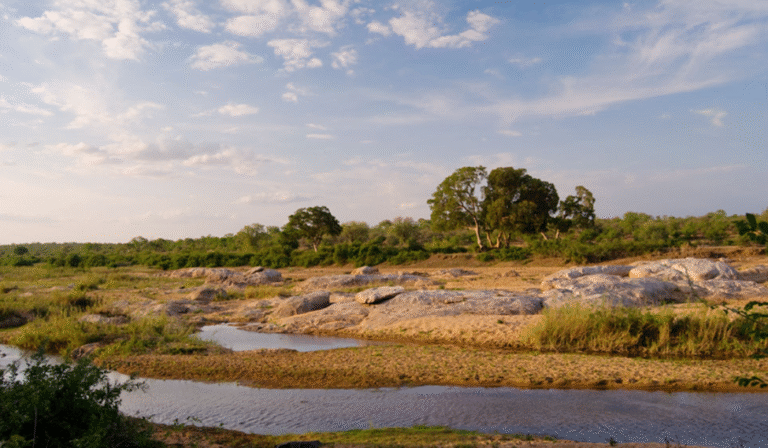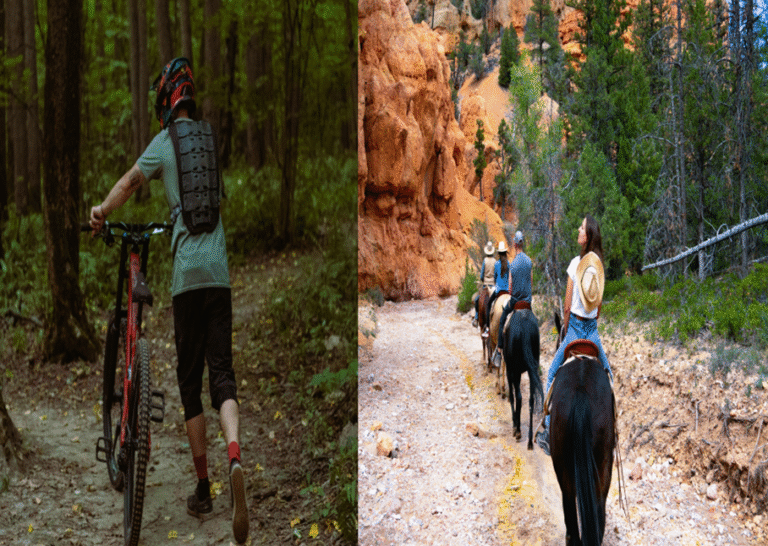
Hiking is fun, but you need to prepare well. Wearing the right clothing for hiking keeps you comfy and safe. Whether it’s hot, cold, dry, or wet, your clothes can make or break your hike. Here’s how to pick the best hiking gear for different conditions.
Focus on Layers for Flexibility
Layering is essential for staying comfortable on a hike. It helps you adjust to shifting weather conditions. The main layering system has three parts: base, mid, and outer layers.
Base Layer: Draws sweat away to keep you dry.
Mid-Layer: Insulates and adds warmth.
Outer Layer: Prevents snow, rain, and wind.
Layering helps in temperature regulation. As needed, you can add or remove clothing.
Choose Moisture-Wicking Base Layers
The base layer is important for hiking. It sits next to your skin and manages sweat. Use merino wool or synthetic fabrics like polyester, as they dry fast and keep you warm. Don’t wear cotton because it can get wet and make you cold. Merino wool wicks sweat, dries quickly, and resists odors. Synthetics work too and are cheaper.
3. Opt for Insulating Mid-Layers
The mid-layer keeps you warm, a key part of the right clothing for hiking. Pick fleece, down, or synthetic insulation based on the weather.
Fleece: is light and great for cool hikes.
Down: is warm and packs small but doesn’t work well when wet.
Synthetic insulation: stays warm even when damp.
Skip the mid-layer in summer, but add a fleece or down jacket for cold hikes.
4. Use a Waterproof Outer Layer
When picking the right clothing for hiking, the outer layer is essential. It keeps you dry and blocks wind, rain, and snow. Go for waterproof and breathable options like Gore-Tex jackets and pants.
Light raincoats are great for warm hikes. For winter, choose a thicker waterproof jacket. Keep on dry helps prevent hypothermia.
5. Wear Durable and Comfortable Hiking Pants
For the right clothing for hiking, choose pants that are strong, comfy, and flexible. Avoid heavy fabrics like denim because they trap sweat and limit movement. Go for nylon or polyester pants, which dry fast and resist wear. Convertible pants that turn into shorts are great for different weather. In cold weather, pick fleece-lined or insulated pants. For wet conditions, wear waterproof or rain pants.
6. Protect Your Feet with Proper Hiking Socks
For the right clothing for hiking, don’t forget good socks. Hiking socks give cushioning, warmth, and help stop blisters. Choose merino wool or synthetic blends.
Merino wool socks are warm and dry, even if they get wet. Avoid cotton—it traps moisture and causes blisters. In cold weather, wear thick or insulated socks. For hot hikes, pick light, moisture-wicking socks. Always pack an extra pair!
7. Invest in Sturdy Hiking Boots or Shoes
For the right clothing for hiking, pick shoes that match the terrain. Hiking boots give ankle support for steep trails. For flat hikes, choose hiking shoes or trail runners.
Waterproof boots keep feet dry, while breathable shoes help in hot, dry weather. To prevent blisters, break in new shoes before your hike. Good footwear is a must!
8. Protect Yourself from the Sun
The right clothing for hiking should protect you from the sun, even on cloudy days. Wear a wide-brimmed hat and sunglasses to protect your face and eyes. Pick long-sleeve shirts and leggings with UPF protection, made from merino wool or synthetics.
Don’t forget sunscreen (SPF 30+) on exposed skin.
9. Bring Extra Layers for Cold Weather
For cold hikes, right clothing for hiking includes warm hats, gloves, and neck gaiters. Wool or synthetic gloves stay warm even when wet. A fleece or wool cap keeps heat in. For very cold days, pack insulated gloves and a thick hat. Layer your clothes to stay warm.
10. Plan for Rain and Wet Conditions
Even if the forecast is clear, rain can surprise you. Always pack a lightweight, waterproof jacket. A rain cape can work in a pinch but may lack breathability.
Waterproof pants are also a good idea in rainy seasons. If you’re expecting heavy rain, pack a waterproof backpack cover to protect your gear.
11. Choose Breathable Fabrics for Warm Weather
For hot hikes, right clothing for hiking means light, breathable clothes. Choose fabrics like merino wool or synthetics that dry fast and wick moisture. Wear loose, light-colored clothes to reflect the sun and stay cool. Avoid dark colors because they absorb heat.
12. Avoid Overpacking and Keep It Simple
Wear only what is absolutely essential. Overpacking may make your backpack appear heavy and unpleasant. Stick to the essentials and strive to wear each item multiple times.
Select clothing that is versatile. In mild weather, a fleece jacket can be used as both a mid-layer and an outer layer.
13. Consider the Terrain and Environment
The trail determines the right clothing for hiking. Wear long sleeves and pants in thorny forests to prevent scratches. Bring additional clothing to be warm in high altitudes. Always dress appropriately for the weather and the trail.

The right clothing for hiking keeps you safe and comfortable. Wear three layers: base, mid, and outer. Choose clothes for the season and trail. Pack light and wear strong, versatile items. With the right clothing for hiking, you’ll be ready for any trip!
FAQ’s
What materials are best for hiking clothing?
How do I know what to wear for different weather conditions?
How can I prevent blisters on a hike?
Do I need to wear sunscreen while hiking?
How do I stay comfortable in changing weather conditions?






